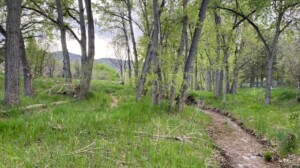Along with statewide initiatives concerning women’s reproductive rights, marijuana legalization, and other hot-button issues that helped to drive impressive turnout (particularly among younger voters) in the 2022 midterm elections, the environment was also top of mind for many Americans as they cast their votes. According to an analysis by San Francisco–based nonprofit Trust for Public Land, ballot measures relating to land conservation and climate resiliency were met with sweeping approval at a nationwide passage rate of 86 percent.
Thanks to voters, approved state and local funding for public parks, climate resiliency efforts, and the stewardship of open space coming out of the midterms totaled $8.7 billion, spread across 63 jurisdictions, including in Texas, Washington, Montana, Utah, Ohio, Colorado, North Carolina, and California. The Trust for Public Land worked with 33 communities to rally voter support for funding related to environmental conservation.
“The effects of climate change and the pandemic over the last few years have had a huge impact on people’s lives and their communities. Parks and protected natural areas continue to demonstrate their immense value for providing clean air, clean water, and wildlife habitat, helping to mitigate and make communities more resilient to a changing climate, and improving our physical and mental health,” Will Abberger, Director of Conservation Finance at the Trust for Public Land, said in a statement.
“There’s so much power in asking voters to vote ‘Yes’ for conservation, which is why Americans of all political stripes in communities large and small across the country voted to protect and expand their access to the outdoors,” Abberger continued.
Among the propositions decided by voters on Tuesday was New York’s Clean Water, Clean Air, and Green Jobs Environmental Bond Act of 2022, also known as Proposal One. The largest statewide measure on any ballot, it was approved by 67 percent of voters and sanctions up to $4.2 billion of state debt and the sale of state bonds for a number of capital projects around the Empire State. The hefty sum will be used to finance and carry out these large-scale works, which include flood and climate mitigation, infrastructure resiliency, electrifying school buses, energy retrofitting existing public buildings, land conservation, and water quality improvements.
As laid out in the act, at least 35 percent of the funding will be required to finance and carry out projects in communities that have been the most disadvantaged by issues related to climate change and pollution. It is also designed to create jobs within the environmental sector.
The act, which is the first environmental bond act to be approved in New York since 1996, comes 10 years after Superstorm Sandy and one year after Hurricane Ida, which triggered catastrophic flooding in and around New York.
In a number of counties and cities, newly instated mill levies will raise property taxes to provide funding that will prevent wildfires, maintain parks, and help protect cherished wildlife areas. In Florida, several counties voted to approve funding for infrastructure-related projects in addition to the conservation of lagoons, beaches, and other coastal landscapes. In Marin County, California, a $23 million bond will purchase the 110-acre Tiburon Ridge to create Martha Property, a regional conservation area.
Green space conservation was on the ballot in nearly all 63 jurisdictions voting on environmental measures, approving funding that would be put toward preserving urban parks, nature trails, farmlands, forests, rivers, and on.
A full list of the states and counties that approved environmental bond ballot measures can be viewed here.











